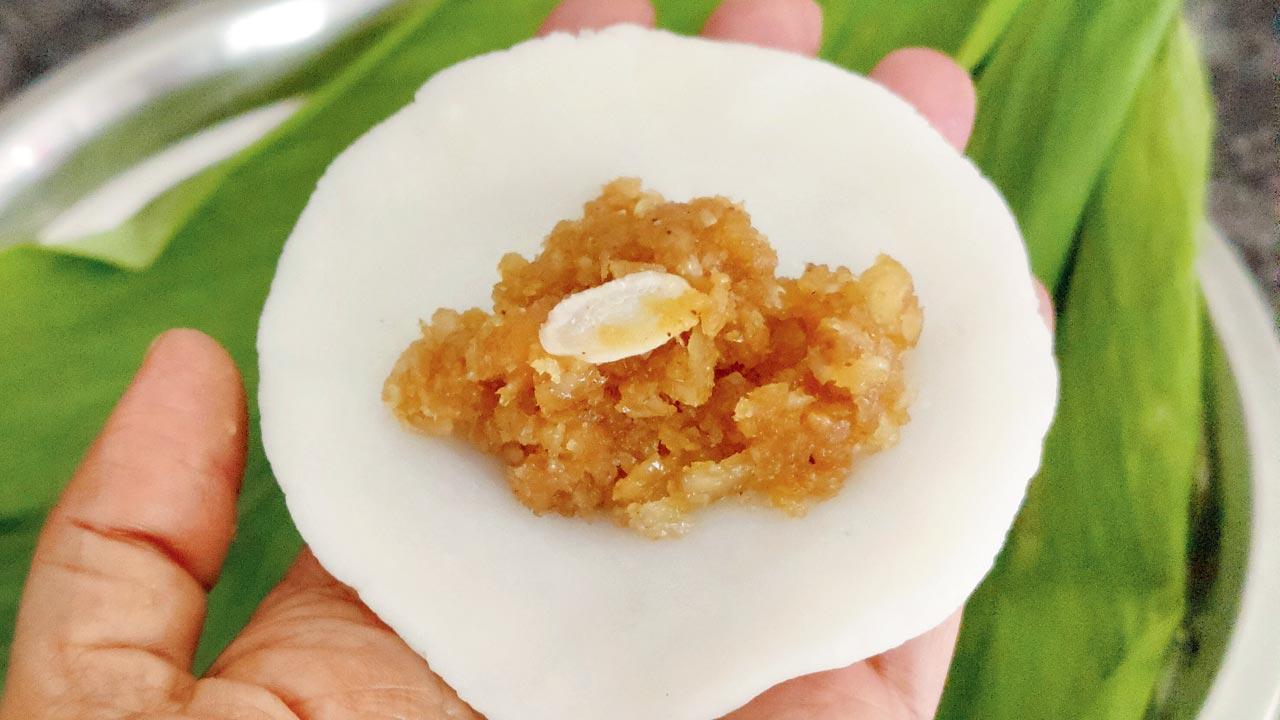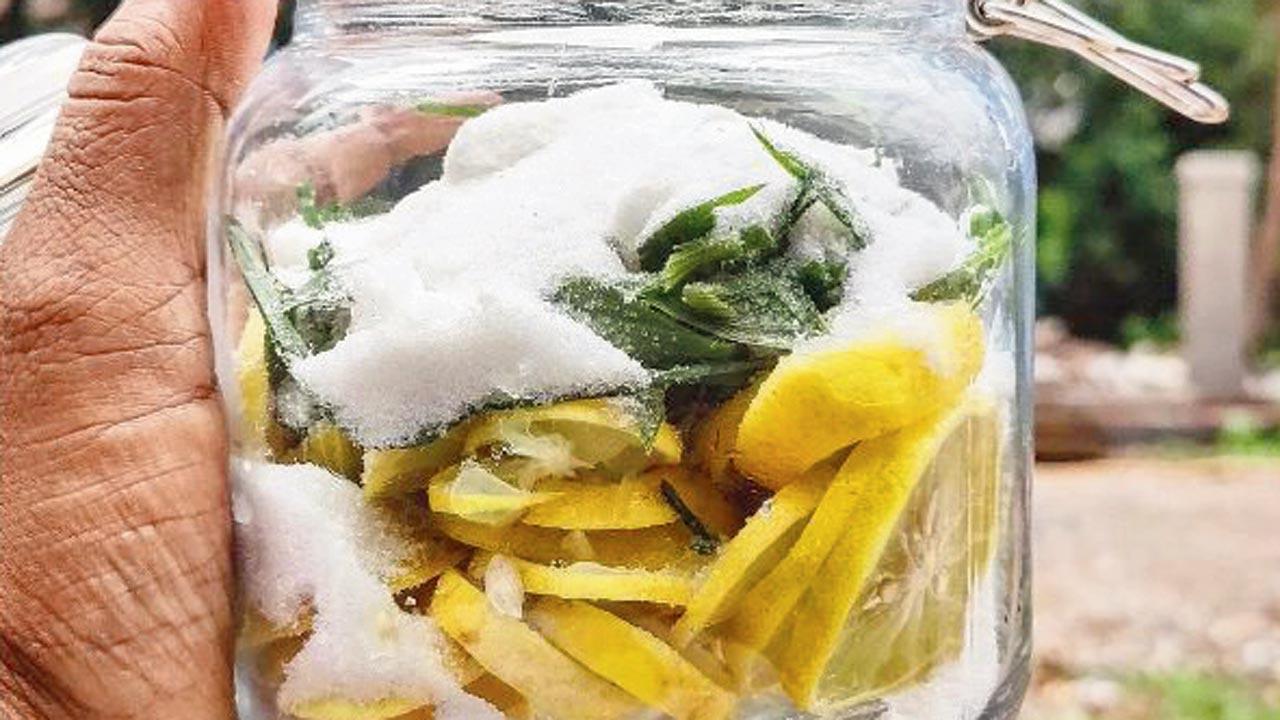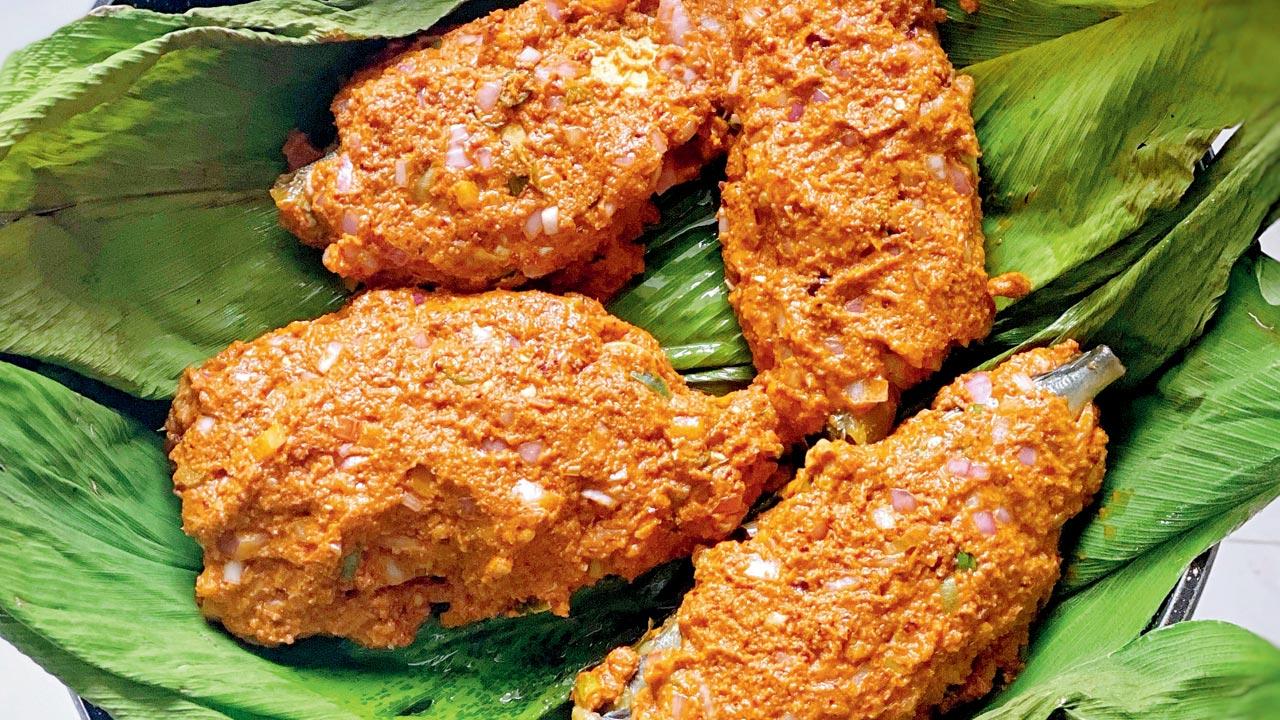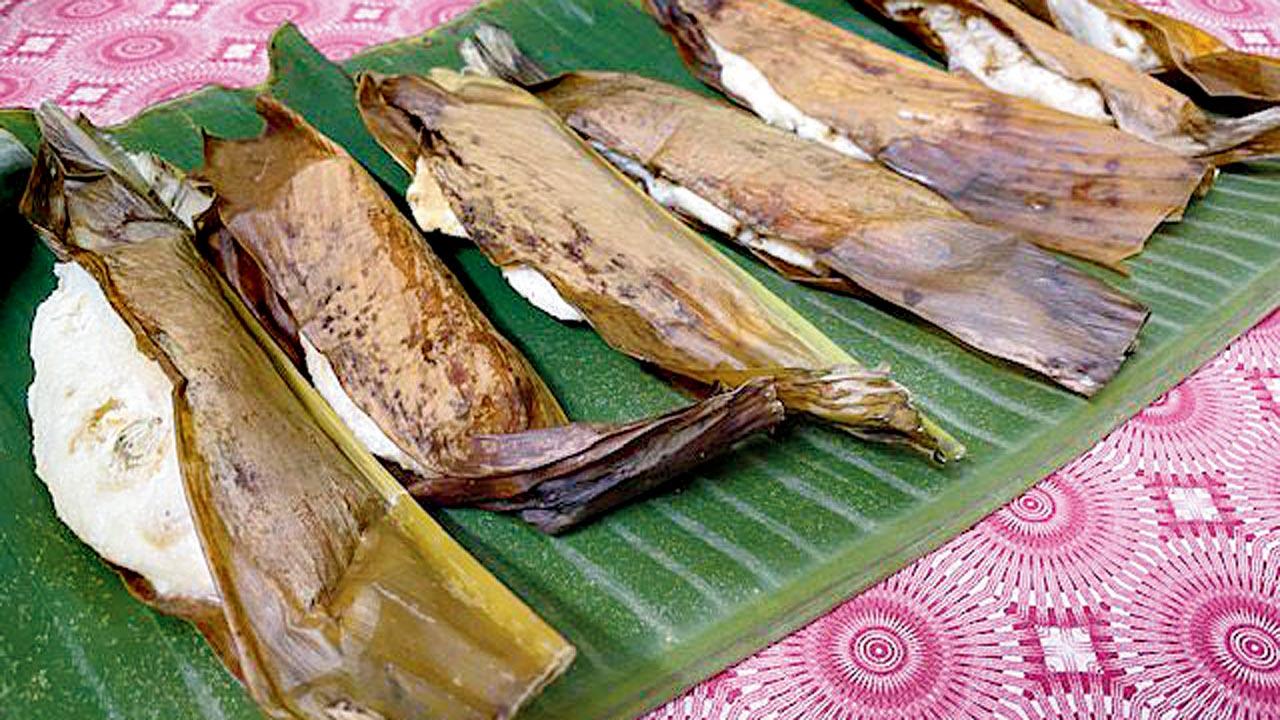The end of the monsoon marks the season for turmeric leaves. With people along the Konkan coast using the leaves for Patholi, here’s a round-up of other traditional dishes that can’t do without its pungent aroma

Ukdiche Unde
We know the wonders of adding a sprig of lemongrass to our morning chai, a stick of cinnamon to boiling rice, and a stingy pinch of camphor to a tall glass of lemon sherbet. Such additions elevate the flavour profile. Apart from the many medicinal benefits of turmeric — that all of us have amply memorised in the past two years — its leaves are widely used in Indian preparations for their taste and piquancy. City-based chefs and home chefs share dishes that use haldi ke patte in both conventional and creative styles.
Stuffed moons

Shabana Salauddin, @ammeez.kitchen
Konkani homes make patholi around this time of the year. The leaves are in supply from the end of August through fall. Patholi is a sweet rice dumpling steamed in haldi ke patte. The leaf has a strong aroma and demands an acquired taste. We follow the traditional recipe for Ukdiche Unde. I haven’t experimented with the ingredient, as it’s not exactly a family favourite. At home, we stuff the rice dumplings with grated coconut and jaggery, shape them into roundels or half-moons, and steam them in turmeric leaves on an earthen pot.

Raise a toast

Ajeet Kalbag, chef and consultant
We grow turmeric in our home garden and this time, there has been an abundance. While a big bunch of the fresh leaves were used to make patholi for prasad during Ganpati, and the dried leaves were used to make ghee and bangda doddak, we still had leaves that could go waste. I have been thinking of experimental ways to use them. The first one of my experiments is a turmeric leaf and lemon cordial [see recipe]. I had quite a few lemons, too, and thought of using both the ingredients. The basic idea is to allow the lemons to ferment in sugar and let the flavour of the leaf steep into the cordial.

4,000
The use of turmeric dates back to those many years as it was identified for its properties in the Indian Vedic period. It reached China in 700 AD, and West Africa in 800 AD
Lemon and turmeric leaf cordial
Ingredients
. 200 gm - Lemons
. 200 gm - Castor sugar
. One big turmeric leaf
Method
1. Begin with washing and cleaning the lemons and the turmeric leaf.
2. Next, slice the lemons in rings or small pieces. Make sure you cut the big turmeric leaf into pieces.
3. Now, take a clean glass jar and place the cut lemons, turmeric leaf and sugar in alternating layers.
4. Close the lid of the jar and keep it aside in a cool dark corner until the sugar dissolves completely.
5. Once the sugar has dissolved, strain the liquid and bring it to a boil.
6. When done, let it cool. Bring it to room temperature and store it in a clean bottle. The cordial is now ready
for use.
Sounds fishy

Shanti Petiwala, @riotofflavours
The bangda doddak has several names in the Chitrapur Saraswat [Amchi] community. My family calls it Hubbe. We clean the fish, slit and marinate it with salt and haldi. For the paste, we use coconut, tamarind and dry red Byadgi chillies. My family recipe also uses toasted urad dal, methi and coriander seeds. These ingredients are ground into a thick paste that coats the fish. The marinated bangda is then covered in turmeric leaves and baked. Traditional baking used coconut husks or coals. Earlier, a utensil akin to a bundt pan was also used but now, a clay pot does the trick.

For the first-born

Sneha Senapati, @sneha_senapati
Prathamastami, a puja for the family’s first-born, is observed in many parts of Odisha. The occasion calls for enduri pitha or haladi patra pitha, a special dish that uses fragrant turmeric leaves. The puja precedes Sankranti, which we usually observe towards the close of December. The pitha or steamed dessert carries a stuffing of caramelised chhena [cottage cheese] or khoya [dried and thickened milk]. The rich mix is then moulded in banana-like shapes with the help of haldi ke patte and steamed on a low flame. At home, I add the leaf to boiling toor dal for that kick.

 Subscribe today by clicking the link and stay updated with the latest news!" Click here!
Subscribe today by clicking the link and stay updated with the latest news!" Click here!










